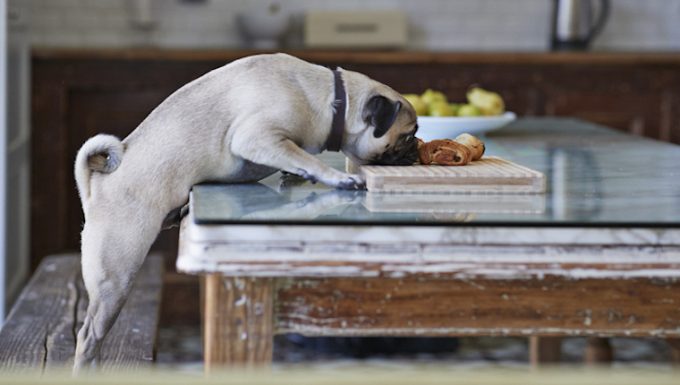Fatty tissue inflammation in dogs causes the fat cells underneath the skin to swell up. The condition is often caused by too much fat in a dog’s diet.
Interestingly, the condition has become less common as dog food brands have added more antioxidants to their foods.
Technically, the condition is also known as steatitis.
If you see the signs of fatty tissue inflammation in your dog, then get to a veterinarian for a proper diagnosis and treatment.
Here’s what you should know about the symptoms, causes, and treatments for the condition.
Symptoms of Fatty Tissue Inflammation in Dogs
The condition produces a range of symptoms. For instance, some of the most common symptoms include:
- Series of small bumps (containing fat)
- Loss of appetite
- Sores
- Shying away from playing
- Acting lethargic
- High body temperature
Causes of Fatty Tissue Inflammation in Dogs

The cause of the condition can be one of many things. For example, some of the most common causes of the condition include:
- Too much unsaturated fat in the diet
- Eating too many human foods
- Trauma
- Tumors
- Infection (bacterial, viral or fungal)
- Diet deficient in vitamin E
Additionally, some cases of the condition are considered to be idiopathic. This means that there is no known cause.
Treatments for Fatty Tissue Inflammation in Dogs
Firstly, your vet will ask about your dog’s symptoms and recent medical history. Secondly, your vet will ask about any circumstances that could have caused the condition.
Thirdly, a full physical examination will be carried out by your vet.
Next, blood and urine tests will also be taken. A sample of any bumps will also be taken using fine needle aspiration.
Unfortunately, many dogs find the condition to be an uncomfortable one. So their comfort level will be a key part of any treatment.
In short, changing diet can be a big help in tackling the condition. Your vet can help formulate a diet geared to your dog’s personal needs.
Additionally, vitamin E supplements can be considered.
In cases where any of the lumps have become infected, a course of antibiotics will be prescribed.
As always, if your vet prescribes your dog any medicine, it’s vital to follow the precise dose and frequency instructions. Also, finish the full course of medicine even if your dog seems better.
In general, remember that this condition may take weeks to treat. So be patient with your dog while they switch to a healthier lifestyle.
Have you ever cared for a dog who suffered from this condition? How did your vet help your dog recover? Let us know in the comments section below.




